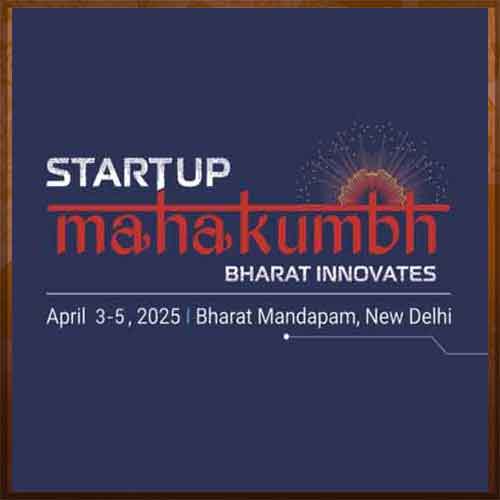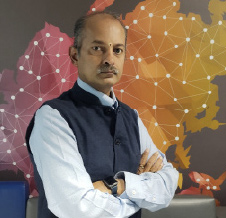ICT in Healthcare: Making Strides
2011-06-24
Healthcare is a booming business In India. It is natural that healthcare professionals in this fast-growing economy should have access to sophisticated health information technologies (HIT).
Welcome to the world of good health. This is exciting times for India. The country's nervousness and anxiety in challenging its own limitations is now a thing of the past. As India asserts itself as a giant among nations, the country is now one of the world's top healthcare providers in the world.
 |
Rothin Bhattacharyya,
Executive Vice-President,
HCL Infosystems
However, the healthcare scenario in India is still in a nascent stage. “While we witness world-class hospitals being set up across the country, there still exists a dearth of healthcare facilities for significant Indian population living in the rural and suburban areas. ICT can act as a catalyst to bridge the wide gap that exists in this industry,” says Rothin Bhattacharyya, Executive Vice- President, HCL Infosystems.
Healthcare is already a US$35-billion industry in India and is expected to cross US$75 billion by 2012 and US$150 billion by 2017, according to Technopak Advisors in their report - “India Healthcare Trends 2008”. The sector offers huge potential to diverse healthcare players as the country sees significant changes in needs. According to a study conducted by the Confederation of Indian Industry (CII) published in May 2010, India needs US$50 billion annually for the next 20 years.
As per a Yes Bank-ASSOCHAM report, India's healthcare sector is expected to grow at 23 per cent annually to become a US$77-billion industry by 2012.
This growth in the Indian healthcare sector has created abundant opportunities for investors in various areas. A recent FICCI-Ernst & Young (E&Y) report highlights several such areas within the healthcare sector.
The medical equipment industry is around US$2.17 billion and is growing at 15 per cent per year. It is estimated to reach US$4.97 billion by 2012.
Clinical trials have the potential to become a US$1 billion industry by 2010 and the health services outsourcing sector has the potential to grow to US$7.4 billion by 2012, from US$3.7 billion in 2006.
The Government, along with participation from the private sector, is planning to invest US$1 billion to US$2 billion in an effort to make India one of the top five global pharmaceutical innovation hubs by 2020. The Government launched the National Rural Health Mission (NRHM) in 2005. It aims to provide quality healthcare for all and increase the expenditure on healthcare from 0.9 per cent of GDP to 2-3 per cent of GDP by 2012.
“Also ICT plays a major role not only in the individual hospital but also to macro level connecting all the hospitals and need of healthcare,” says Dr. R.C. Patnaik, Chief Director, IT, MCD. He says, "The success of computerization happens if it is used by the end users. In a hospital the end users are the staff nurse, the physiotherapist, the dieticians or radiologist or store keeper etc. We have intensely trained our staff. We have set up a lot of training centres all across Delhi in particular all the six hospitals. We have set up training centres in civic centres as well."
 |
Girish Kumar,
Practice Head, healthcare and Life Sciences,
HP India.
According to Girish Kumar, Practice Head, Healthcare and Life Sciences, HP India, Indian healthcare industry currently is estimated to be around 20 billion in revenues, growing at 13-15 per cent CAGR. This includes hospitals, physician practices, Government diagnostics, etc. The RoI is estimated to be 15-20 per cent.
“Healthcare has emerged as one of the most progressive and largest service sectors in India with technology playing a crucial role in the implementation of its software and resources,” says Girish Kumar of HP.
Healthcare in Cloud
 |
Subroto Das,
COO, EMC India and SAARC
The big tech vendors are now convinced that the health industry in India will be the next to embrace cloud computing. Indian healthcare industry's spending on IT requirements is expected to go from US$191 million in 2010 to US$1.5 billion annually by 2020, said a study today by a consultancy firm Zinnov. “Of this, cloud computing could comprise 40 per cent (or US$600 million) of the total annual healthcare IT spending by 2020,” says Subroto Das, COO, EMC India and SAARC.
According to Girish, “Cloud-based services will offer an alternative to on-premises IT infrastructures and transition to virtualized server infrastructures drives shared-disk storage. Virtualization will also have a lot of relevance in the years to come as it brings advantages such as reduction of power, cost and space, which optimization of server infrastructure add to the positives.”
HCL Infosystems offered cloud as a solution to integrate data spread across various hospitals of the Fortis chain. Under the cloud solution, patients are provided a unique identification number which enables Fortis hospitals across geographies to access patient data and patients don't need to carry their medical records as they move from one Fortis hospital to another - provides a uniform and pleasant patient experience.
Besides, electronic patient records are accessible from all Fortis locations, resulting in fewer errors, quick response time in emergencies and patient convenience. Cloud enables Fortis to provide telemedicine to remote locations.
Another case in point is the IT giant Dell providing cloud services to Max Healthcare. Dell Services has converted the Information Technology infrastructure of all eight Max Healthcare facilities into a private MPLS (Multi-Protocol Label Switching) cloud running remotely from Dell Services Data Centre in Noida. This has resulted in Max Healthcare becoming one of the most technologically advanced Healthcare chains in India. “Max Healthcare is now on a private MPLS cloud running remotely from Dell Services Data Centre in Noida. Our home-grown HIS and all other software applications are now operating from Dell Services Data Centre in Noida. As a next step, we are looking forward to rolling out electronic health records (EHRs) to bring an enhanced patient care. This is living proof of deep healthcare-IT expertise brought to us by our technology partners - Dell Services India and would help us as we expand our capacities and footprint in India,” says Dr Pervez Ahmed, CEO & MD, Max Healthcare.
Challenges and Solutions to ICT Deployments for Healthcare
The Government and healthcare industry leaders around the world are relying on Health IT to overcome numerous challenges of the healthcare system and drive the much-needed transformation. Without doubt, the adoption rate of new technology in the healthcare sector will rapidly accelerate over the next several years. It is evident that change is coming.
“Simply adding technology is not enough. Dell believes information is the foundation on which healthcare will move forward, transitioning from treating illness to managing wellness. While technology itself plays a major role, it is also about connecting people to the right technology and integrating that technology into their workflows. Additionally, processes need to be re-examined and, in many cases, re-engineered,” says Dr Hemant Kumar, Director, Dell Services, India.
In terms of healthcare information technology, development of national standards for interoperability and connectivity are crucial. This will eliminate waste and duplication while ensuring that patient information is available at the point of care, eliminating unnecessary tests, enabling more informed decisions and improving the quality of care.
According to Subroto, “Key challenges in the sector range from lack of understanding of the role ICT can play in helping improve their business to how to maximize their existing IT investments and make future investment in the right areas. Indian healthcare spend on IT is very low compared to IT/ITeS, BFSI, Telcos and manufacturing.”
The private sector and within that the larger players are making the necessary investments in leveraging IT to better deliver healthcare services. Spending in the public sector is still limited.
Also, overall IT spends need to move beyond computerization towards actual digitization of client records and access across doctors, hospital floors and across geographic locations as well "Healthcare is a very critical industry for us and our solutions play a crucial role in assisting complex medical procedures. Objet's 3D printed models assist medical experts in a range of medical fields from audiology to dental, orthopedic and other applications. The biocompatible properties of Objet's 3D printing materials serve the needs of the medical segment well. Tests such as cytotoxicity, sensitization, USP Class VI, and more provide medical experts with the ability to undertake advanced experiments using Objet-printed models,” says Ashan Dhunna- Sales Director - India & ME, Objet Geometries AP Limited. Objet Geometries is the innovation leader in 3D printing for rapid prototyping and additive manufacturing, provides 3-dimensional printing systems that enable manufacturers and industrial designers to reduce cost of product development and dramatically shorten time-to-market of new products."
There is a need to strategically communicate and highlight the importance of ICT in the healthcare industry, thereby increasing the level of awareness. Once the end-customer is satisfied with the improvement in the standard of services being offered, there will be an indirect but positive impact on the processes and systems. Healthcare penetration into remote locations in the country is limited where ICT can help improve the situation.
As of now, the health industry still faces problems due to the lack of availability of past medical records of the patients because of no single source of information, thereby posing a big question mark on the lack of in-house IT standards for the hospitals. Unique patient identification remains a challenge. The same patient has different identities in different hospitals. This also hampers patient record portability
With the introduction and implementation of the right technology, a permanent change could be brought about in the current healthcare scenario in India. Also, clinical research data is not readily available across geographies.
 |
“On the healthcare front, organizations face challenges mainly in three areas - delivering quality patient care, streamlining care delivery processes, and improving business processes. These challenges are compounded by an environment with many time-dependent critical processes, multiple modes of communication, and many mobile caregivers and other workers with widely varying availability throughout the day. Duplications, delays, and errors in communication are a major factor in healthcare delivery processes, costs, and outcomes,” says Neeraj Gill, MD, India & SAARC, Polycom.
Government Vs Private Healthcare
Health is a major concern for the government, citizens and businesses. While each country faces its own healthcare issues, developing countries seem to carry the greatest burden of disease and the fewest resources to deal with the problem. In many of these countries, access to healthcare is denied to large groups of people owing to various causes that include an ever- growing population, greater number of elderly, increasing urbanization, overcrowding and incidence of new diseases resulting from new ways of working and living.
As care becomes more complex, it requires a specialized workforce to deliver services - often across geographically dispersed areas. The need of the hour is for accessible, affordable and responsive healthcare solutions, both to the specific, constantly changing medical and clinical needs of patients, and to the broader demographic, social, and cultural shifts that typify the modern world.
 |
Rajesh Shetty,
Vice-President,
Cisco India & SAARC
“The government hospitals cater to mass and the technology adoption of the ICT is still not very high as compared to the private hospitals,” says Sandeep Chinchane, Solution Engineering & Development - Head, APAC Region, Siemens Enterprise Communications Pvt. Ltd. India.
Therefore, while there are differences in the specific needs of government and private hospitals, the overall objectives of ICT adoption will be largely the same.
The needs of both government and private hospitals are, more or less, similar. Both have to focus on managing the mammoth information. Regulation and compliance also plays an important role today. “What is different is the level of existing investment made in IT. Private hospitals are ahead here,” says Subroto.
“Both the organizations, government and private hospitals are working for the same objective, to provide the best of treatments to the patients. In terms of usage of telemedicine, the needs of both the hospitals may differ as the flow of patients in government hospitals is much higher than that of a private one. Keeping in view the requirements, the specs for the solutions differ. Telemedicine definitely helps in treating the patients present in remote locations in both the cases,” says Neeraj Gill of Polycom.
Finally...
There is no denying that ICT revolution has redefined the structure of healthcare organization. The changes in information technology have brought about a fundamental change throughout the healthcare process.
---------------------------------------------------------------------------------------------------------------------------------
Dell Services gives Max Healthcare the “Cloud” Advantage
Dell Services and Max Healthcare announced Dell Services has converted the information technology infrastructure of all eight Max Healthcare facilities into a private MPLS (Multi-Protocol Label Switching) cloud running remotely from Dell Services Data Centre in Noida. This cloud infrastructure deployment makes Max Healthcare one of the most technologically advanced healthcare chains in India with a near plug-'n'-play capability for information technology deployment as they add more hospitals/facilities to their network. Further, the private cloud improves the availability of their healthcare information systems and analytical tools and sets the stage for the rollout of Electronic Health Records (EHRs) for enhanced patient care.
In September 2009, Max Healthcare and Dell Services, formerly Perot Systems, entered into a 10-year agreement valued at US$20 million (over Rs.90 crore) under which Dell Services provides infrastructure management and EHR implementation to Max Healthcare. Dell Services manages all IT operations for Max Healthcare, including infrastructure management, data hosting, applications portfolio management, project management office, service desk and clinical adoption of VistA EHR system (an EHR platform developed by the U.S. Department of Veterans Affairs). Dell Services has completed the migration of the information technology infrastructure for the eight Max Healthcare hospitals to the Dell Services Data Centre in Noida. Max Healthcare's Health Information System (HIS), which forms its business backbone as well as all other software applications are now operating on a private cloud.
Benefits to Max Healthcare: Dell Services has provided a robust cloud infrastructure to enable Max Healthcare to take on the load of EHR and Computerized Physician Order Entry. Max Healthcare hospitals are already experiencing an enhanced stability of the IT environment, better availability of HIS and data analytics tools. The private MPLS cloud allows Max Healthcare to set up its process and tools at new facilities easily, as these facilities would get access to Max's HIS by just hooking up to the cloud. The private MPLS cloud will help Max Healthcare as it expands its capacities and footprint across India.
Technological Highlights: early-warning system to proactively monitor the health of the information technology environment and reduce downtime at the hospitals of HIS in a cluster mode to reduce the likelihood of HIS going down for a full department or a critical area.
Smart automatic monitoring tools to monitor network devices and critical servers 24/7.
SAS 70 Type II certified data centre
---------------------------------------------------------------------------------------------------------------------------
HCL Infosystems offers cloud as a solution to integrate data spread across various hospitals of the Fortis chain.
Name of the Hospital: Fortis Hospital
Size of the Order: NDA
Problem faced by the Hospital: Fortis is a rapidly-expanding group of hospitals - a dynamic combination of greenfield projects and acquisitions. The idea was to equip the brand Fortis as a provider of unique, pleasant and uniform customer experience across Fortis hospitals. In addition, the service also aimed at providing patients access to the best medical advice and diagnostic services from among the entire group of Fortis hospitals irrespective of the patients' location.
Solution offered: In view of the above requirements of Fortis, HCL Infosystems offered cloud as a solution to integrate data spread across various hospitals of the Fortis chain. The Fortis private cloud offers will act as a one-stop solution to all the needs.
Infrastructure as a Service - A robust data centre providing virtualized hardware and connectivity for all Fortis locations with full disaster recovery and backup infrastructure
Platform as a Service - for Fortis IT and Fortis software vendors to develop, maintain, deploy and deliver software applications for various Fortis functions. The main business platform “Cache” and middleware platform “Ensemble” are hosted on the cloud
Software as a Service - As part of the cloud, Fortis has centralized its Hospital Information System: Trakcare from InterSystems and created a central analytics and MIS platform. There are plans to host additional applications like the corporate HR system and ERP (Oracle eBiz) on the cloud
Benefits offered after the solution deployed: Patients are provided a unique identification number which enables Fortis hospitals across geographies to access patient data and patients do not need to carry their medical records as they move from one Fortis hospital to another - provides a uniform and pleasant patient experience.
* Electronic patient records are accessible from all Fortis locations: fewer errors, quick response time in emergencies and patient convenience. * Medical practitioners can access patient records across the world. * Radiology images are available to doctors across Fortis locations, thus eliminating the need of expensive film and physical transportation of reports. This drastically brings down cost and patients do not need to travel distances to see specialist doctors. * Cloud enables Fortis to provide telemedicine to remote locations. * Central patient data opens up the possibility of processing this data for various research purposes while complying with prevailing regulations. * Dynamic provision of services/resource pools in a coordinated fashion with low risk and complexity in supporting software/services. * No concern for the nature and location of underlying infrastructure. * Improved performance and lower maintenance costs. * High availability and disaster recovery.
------------------------------------------------------------------------------------------------------------------------
HP's Solutions for Healthcare
In one of the recent projects, HP (India) worked for Medical Education and Drugs Department (MEDD), Government of Maharashtra, to build a comprehensive healthcare and educational informatics network connecting all the important functionaries of MEDD, Maharashtra.
Under this project, 14 government medical colleges and 19 affiliated colleges will be linked through Information Technology. We will design, build and manage a network connecting vital MEDD functionaries across Maharashtra and will run centralized healthcare applications for MEDD.
The project targets the population that is dependent on government hospitals at large, doctors, nurses and paramedics who are key players in the delivery of care, diagnostic services providers, medical and nursing students and medical instructors.
For more contact:
edit@varindia.com/beenish@varindia.com
See What’s Next in Tech With the Fast Forward Newsletter
Tweets From @varindiamag
Nothing to see here - yet
When they Tweet, their Tweets will show up here.




























